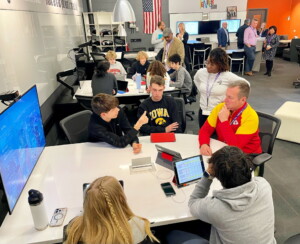9 Tips for Next-Gen Public Relations

The days of traditional public relations (PR) as we knew it are quickly coming to a close. With the fast paced, information world we now live in, you can get news in real time versus waiting for the evening news or next day’s newspaper. This constant supply of information also means media outlets aren’t as reactive to traditional press-releases and email blasts as they used to be. However, we have found that a personalized email or thoughtful outreach connecting an announcement to a journalist’s particular focus or passion can lead to at least a reply back thanking your for your pitch.
This is great, right? It means the most meaningful work and announcements are being shared, adding even more value to any earned media you land. Correct! Except that many schools, organizations and EdTech companies are still using traditional bulk email blasts, press releases and other “old school” methods for pitching in the hopes that someone picks up their news. At Getting Smart, we get at least a dozen generic email pitches a day that lack creativity and personalization. But when we see a customized email that connects back to recent content or themes we’ve been writing about, we almost always find a way to incorporate whatever’s being pitched. It’s also a bonus if the email includes social media messages, images and a personal story.
Here’s nine best practices for next-gen public relations our team tries to practice:
1. Keep it Short and Sweet
Media outlets and blogs want content that’s easy to digest, and often won’t spend more than a few seconds reading it, especially if they scroll down and see that you’ve sent them a lengthy email. If you or your PR firm is sending out long pitches to hundreds of outlets, your story may not be getting the spotlight it deserves.
2. Go Wire-less
To use the wire or not–that is a very good question. Wire services have been around for decades, but definitely aren’t used the same way today. Today’s wire service is more of a paid media opportunity than earned media. You pay a fee that guarantees your release will automatically be picked up by the news feeds programmed to do so, but there is no guarantee an actual living, breathing journalist will ever see it. That’s not to say they don’t have any use at all, wire services can still be useful in certain situations.
3. Write a Next-Gen Release
Traditional press releases are rather long and bulky, with many quotes and detailed descriptions. We prefer a more digestible version: short, concise and informative, almost like a media advisory that also tells a story. Personalize your introduction email, cut and paste the release to the bottom of the email (don’t attach anything to a pitch – most journalists admit they don’t open attachments) and you’ve got a pitch that is more likely to be read.
4. Make it Easy to Share
In addition to the new release style, it’s imperative that you send a link to wherever your media advisory or press release lives online. Even if your pitch doesn’t get turned into a story, including a live link and even some sample Tweets and a Facebook post will help increase your chances of getting a share on social media. How can someone share your news if it doesn’t live anywhere online? We suggest not sending a release unless you also send a link!
5. Develop Relationships
Creating strong relationships with outlets will help you pitch tailored stories directly to the blog and media channels that are of high interest to their audience. So take the time to read the outlets you are pitching, and comment on articles when appropriate. You’ll better understand the stories the outlet accepts and which journalist will be more interested in your pitch, which means a better chance for a hit.
6. Know your Audience
Are you trying to reach educators and school leaders or policy makers and parents? Do you want this to be published by a national media outlet or an education blog? The pitch for each of these will involve different messages and different outlets. A pitch to a media outlet like GettingSmart.com should be different than one you should send to the New York Times. So take the time to prepare–pitching is 90% research/prep and 10% actual pitching.
7. Create Social Buzz
Before I discovered Twitter, I checked news websites in the morning to stay current on news. Now I head straight to Twitter where I probably get 75% of my news and other updates. So in other words, if you’re not publishing content on Twitter, Facebook and/or Instagram you’re missing out on a huge audience. Frequent social media participation should be one of your biggest communication and PR strategies. If it’s not, it’s time to press pause and check on where the majority of your target audience gets their information. Chances are very good that they are utilizing one if not multiple social media platforms.
8. Tell a Story
Think about a compelling article you last read. Why did it speak to you? What made it effective? It likely included a story – a first hand experience with a new product, a life that was changed, a school that saw great student gains. Identify someone that can tell your story and include their contact information in your pitch or write up a brief version of their story for the journalist.
9. Add Multi-media
Gone are the days of traditional story pitching and sharing your news with just a press-release. In fact, depending on your audience (see #6 above) you can reach more folks and share a more compelling story with a blog post, Smart Bundle or podcast. Shameless plug- if you haven’t listened to the Getting Smart podcast, download it today and listen to it on your next commute or while you’re cooking dinner. It unpacks everything EdTech and innovations in learning!
Is your organization practicing next-gen PR and media relations? Need help transitioning to this new style and reaching your audience? Contact me!
For more tips on Smart Work see:
- Project Management Tools for School and Work
- 5 Tips for Managing Social Media (Before it Manages You)
Stay in-the-know with all things EdTech and innovations in learning by signing up to receive the weekly Smart Update.






0 Comments
Leave a Comment
Your email address will not be published. All fields are required.